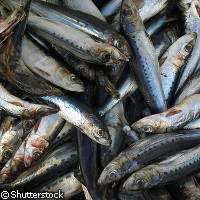Study offers hope for fisheries
It should be possible to save the world's fisheries from collapse by applying the right mix of fisheries management techniques, according to an international study published in the journal Science. However, the researchers warn that the road to recovery will not be easy, and catches (and incomes) may suffer in the short term in certain areas. The aim of the research was to study the latest trends in fish abundance and exploitation rates (in other words, how many fish are taken out of the sea), and to identify the management tools that have helped fish stocks to recover. The scientists drew on catch data, fish stock assessments, the results of scientific trawl surveys, data from small-scale fisheries, and computer models. 'Prior to this study, evaluations of the status of world fish stocks and communities were based on catch records for lack of a better alternative. Results were controversial because catch trends may not give an accurate picture of the trends in fish abundance,' explained Ana Parma of Centro Nacional Patagónico in Argentina. 'This is the first exhaustive attempt to assemble the best available data on the status of marine fisheries and trends in exploitation rates, a major breakthrough that has allowed scientists from different backgrounds to reach a consensus about the status of fisheries and actions needed.' The good news is that in half of the ecosystems studied, the average exploitation rate is falling. This is important because high exploitation rates tend to result in the collapse of fisheries. Furthermore, the team identified many cases where good management practices have lead to an increase in fish sizes and numbers. Nevertheless, they warn that 63% of the world's fish stocks are in decline and stress that even lower exploitation rates are needed to allow the most vulnerable species to recover. 'Across all regions, we are still seeing a troubling trend of increasing stock collapse,' commented Boris Worm of Dalhousie University in Canada, the lead author of the paper. 'But this paper shows that our oceans are not a lost cause. The encouraging result is that [the] exploitation rate - the ultimate driver of depletion and collapse - is decreasing in half of the 10 systems we examined in detail. This means that management in those areas is setting the stage for ecological and economic recovery. It's only a start - but it gives me hope that we have the ability to bring overfishing under control.' Alaska and New Zealand are singled out for particular praise because they started implementing a range of fisheries management measures before their fish stocks reached rock bottom. And while most cases of good practice were to be found in developed countries, the scientists also uncovered examples in the developing world. For example, in Kenya, scientists, managers and local communities have worked together to close off certain areas to fishing and restrict the use of certain types of fishing gear. Fish sizes and numbers are now increasing, along with the incomes of the local fishermen. 'We know that more fish can be harvested with less fishing effort and less impact on the environment, if we first slow down and allow overfished populations to rebuild,' said Jeremy Collie from the University of Rhode Island in the US. 'Scientists and managers in places as different as Iceland and Kenya have been able to reduce overfishing and rebuild fish populations despite serious challenges.' According to the researchers, laws that explicitly forbid overfishing and set out clear rules and targets are key to a successful management plan. Other effective techniques include catch quotas, community management schemes, excluding certain areas from fishing, the provision of economic incentives and the selective use of fishing gear. However, there is no silver bullet, and so different mixes of techniques will be needed to fit local conditions. The researchers also criticise the way the concept of Maximum Sustainable Yield (MSY) is used. MSY is an internationally accepted system for working out the total acceptable catch. The scientists note that the MSY should be seen as an absolute upper limit rather than a target. They used computer models to calculate a multi-species MSY (or MMSY), which adds up the yield across all species in an area. Their analyses suggest that fishing below MMSY results in as many fish as does fishing over the MMSY, with the added advantages that the number and size of fish in the system tends to rise while the risk of stock collapse falls. 'Below MMSY, there is a fishing-conservation sweet spot where economic and ecosystem benefits converge,' noted co-author Steven Palumbi of Stanford University in the US. 'We caution that the road to recovery is not always simple and not without short-term costs,' the scientists write in their article. 'Yet, it remains our only option for insuring fisheries and marine ecosystems against further depletion and collapse.'



